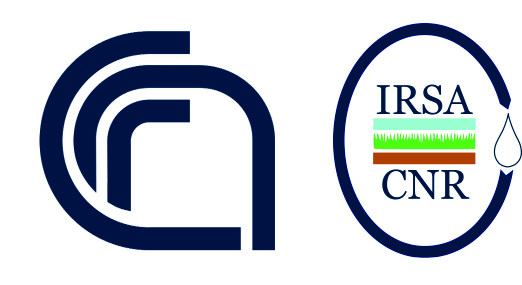| Title | Antibiotic and heavy metal resistance in enterococci from coastal marine sediment |
| Abstract | Sediment samples from three coastal sites - two beach resorts (Beach 1 and Beach 2 sites) and an area lying between an oil refinery and a river estuary (Estuarine site) - were analyzed for antibiotic- and heavy metal (HM)-resistant enterococci. A total of 123 enterococci, 36 E. faecium, 34 E. casseliflavus, 33 E. hirae, 5 E. faecalis, 3 E. durans, 3 E. gallinarum, and 9 Enterococcus spp, were recovered. Strains resistant to erythromycin, tetracycline and quinupristin/dalfopristin (Q/D) were recovered from all sites, whereas multidrug-resistant isolates were recovered only from "Beach 2" (14%) and "Estuarine" (3.7%). As regards HM resistance, the strains showed a high frequency (68%) of cadmium and/or copper resistance and uniform susceptibility to mercury. The prevalence of cadmium-resistant strains was significantly higher among erythromycin-resistant than among erythromycin-susceptible strains. A significant association between cadmium or copper resistance and Q/D resistance was also observed at "Estuarine" site. The levels of the two HMs in sediment from all sites were fairly low, ranging from 0.070 to 0.126 ?g/g, for cadmium and from 1.00 to 7.64 ?g/g for copper. Mercury was always undetectable. These findings are consistent with reports that low HM concentrations may contribute to co-selection of antibiotic-resistant bacterial strains, including enterococci. In this work is reported a significant association between specific antimicrobial and heavy metal resistances in enterococci from marine uncontaminated sediments. |
| Source | Environmental pollution (1987) 237, pp. 406–413 |
| Keywords | Antimicrobial resistance genesAntimicrobial residuesSwine farmingItalyqPCR |
| Journal | Environmental pollution (1987) |
| Editor | Elsevier Applied Science Publishers, Barking, Regno Unito |
| Year | 2018 |
| Type | Articolo in rivista |
| DOI | 10.1016/j.envpol.2018.02.073 |
| Authors | Vignaroli C.; Pasquaroli S.; Citterio B.; Di Cesare A.; Mangiaterra G.; Fattorini D.; Biavasco F. |
| Text | 420947 2018 10.1016/j.envpol.2018.02.073 Scopus 2 s2.0 85042733070 Antimicrobial resistance genesAntimicrobial residuesSwine farmingItalyqPCR Antibiotic and heavy metal resistance in enterococci from coastal marine sediment Vignaroli C.; Pasquaroli S.; Citterio B.; Di Cesare A.; Mangiaterra G.; Fattorini D.; Biavasco F. Department of Life and Environmental Sciences, Polytechnic University of Marche, Ancona, , Italy; Department of Biomolecular Science, Biotechnology Section, University of Urbino Carlo Bo , Urbino, Italy; Microbial Ecology Group, CNR Institute of Ecosystem Study ISE , Water Research Institute IRSA , Verbania, Italy; Department of Earth, Environmental and Life Sciences DISTAV , University of Genova, Genova, Italy Sediment samples from three coastal sites two beach resorts Beach 1 and Beach 2 sites and an area lying between an oil refinery and a river estuary Estuarine site were analyzed for antibiotic and heavy metal HM resistant enterococci. A total of 123 enterococci, 36 E. faecium, 34 E. casseliflavus, 33 E. hirae, 5 E. faecalis, 3 E. durans, 3 E. gallinarum, and 9 Enterococcus spp, were recovered. Strains resistant to erythromycin, tetracycline and quinupristin/dalfopristin Q/D were recovered from all sites, whereas multidrug resistant isolates were recovered only from Beach 2 14% and Estuarine 3.7% . As regards HM resistance, the strains showed a high frequency 68% of cadmium and/or copper resistance and uniform susceptibility to mercury. The prevalence of cadmium resistant strains was significantly higher among erythromycin resistant than among erythromycin susceptible strains. A significant association between cadmium or copper resistance and Q/D resistance was also observed at Estuarine site. The levels of the two HMs in sediment from all sites were fairly low, ranging from 0.070 to 0.126 g/g, for cadmium and from 1.00 to 7.64 g/g for copper. Mercury was always undetectable. These findings are consistent with reports that low HM concentrations may contribute to co selection of antibiotic resistant bacterial strains, including enterococci. In this work is reported a significant association between specific antimicrobial and heavy metal resistances in enterococci from marine uncontaminated sediments. 237 Published version http //www.scopus.com/record/display.url eid=2 s2.0 85042733070 origin=inward Articolo in rivista Elsevier Applied Science Publishers 0269 7491 Environmental pollution 1987 Environmental pollution 1987 Environ. pollut. 1987 Environmental pollution 1987 andrea.dicesare DI CESARE ANDREA |
